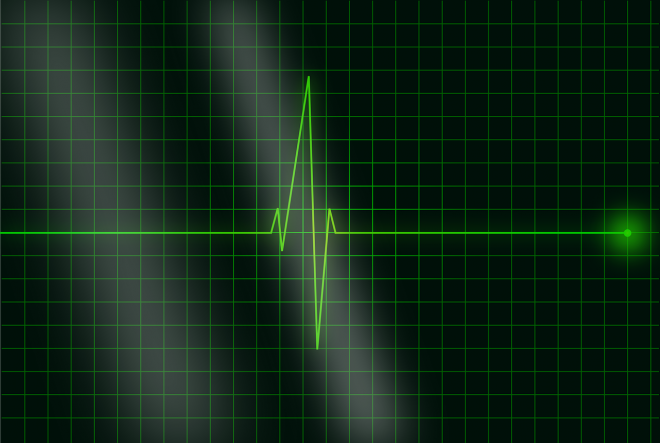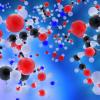Hearts aflutter for pacemaker simulation
The Challenge:
The world implants over a million pacemakers each year, but each transplantation comes with the risk of complications. These complications often arise because of a failure to predict the complex interactions that cause heart arrythmia.The Solution:
University of Auckland researchers used NeSI HPC infrastructure and support staff to build a model which simulates the feedback mechanisms between the heart, lungs and vagal nerve that affect heart rate. It allows the team to mimic the real conditions of a human heart more closely.The Outcome:
The simulation can test novel pacemakers before human trials. This lowers the cost barrier of testing new pacemaker designs and creates a safer bridge between animal and human trials. It will help create a new generation of safer pacemakers.
A research team at the University of Auckland has developed a new simulation of the cardiovascular system to improve testing of novel pacemaker designs. Utilising NeSI’s high-performance computing infrastructure, the researchers called upon the expertise of NeSI Support and the computing power of the Mahuika cluster to build and test their simulation.
Over one million pacemakers are implanted into patients each year and this number is growing. These devices help control heartbeat irregularities but can come with hidden issues. Pacemakers can trigger unintentionally, switch modes unexpectedly and can feature design flaws. These issues are often impossible to spot before the patient returns home. Due to the growing number of yearly transplants and the potentially fatal consequences of malfunction, new pacemaker designs require exhaustive – and expensive – testing before human trials.
An interdisciplinary project in this area was initially funded by the Faculty Research Development Fund (FRDF) and led by University of Auckland researchers Prof. Partha Roop and Dr. Nitish Patel in the Department of Electrical, Computer, and Software Engineering, Dr. Vinod Suresh in the Department of Engineering Science, Dr. Mark Trew at the Auckland Bioengineering Institute, and Prof. Julian Paton in the Department of Physiology. After the FRDF ended, Julian continued to lead the project alongside fellow Faculty of Medical and Health Sciences researcher Dr Rohit Ramchandra, and funded by Ceryx Medical Ltd. Within that research group, Dr. Weiwei Ai has been working as a research fellow on computer modelling and simulation.
The project’s goal was to build a multi-organ emulation platform which would copy how the lungs, heart and vagal nerve work together to regulate the human heartbeat. Attaching this platform to a novel pacemaker would safely test device before implantation into humans. It could act as the bridge between human an animal trials. Weiwei worked closely with NeSI team members to build this simulation.
“When you have bradycardia, a conventional pacemaker will provide stimulation to your heart to increase your heart rate. In a healthy human being, when we breathe in, our heart rate increases a little bit, and decreases when breathing out. We call this respiratory sinus arrhythmia (RSA). It’s a good thing. The absence of RSA is an indicator of severe cardiovascular disease. Conventional pacemakers are not able to mimic the behaviour of RSA,” said Weiwei.
Mimicking RSA in the simulation could help account for the real-world variations of heart behaviour. These small inconsistencies are vital for healthy hearts, but are responsible for many of the issues which can degrade pacemaker operation over time. But simulating RSA requires modelling not just the heart, in all its complexity, but the lungs and vagal nerve. All three systems work with feedback from each other. This enormous mix of electrodynamic signals is impossible to model without HPC platforms.
“The system had to be comprehensive enough to capture the coupling between the respiratory and cardiovascular system. There are many factors that affect the feedback between systems. NeSI helped us speed up the simulation by providing a parallel processing platform.”
Mahuika’s parallel processing allowed multiple CPUs to run parts of the simulation simultaneously. The research team created a minimal model incorporating three main compartments in the cardiorespiratory system:
1) a lung model to capture the mechanics of ventilation and the gas exchange, and
2) a cardiovascular system including heart chambers, systemic circulation, and pulmonary circulation, and
3) a closed-loop control system regulating heart rates via vagal nerve signals, incorporating the effects of respiratory drive to the vagal tone, stretch receptors in the lungs, and baroreflex.
“It is quite a comprehensive model. The combination of parameters created by this feedback system is very large. This was my first time using the kind of HPC, so the support team helped a lot. I am very grateful for that. They were very responsive, even during the Christmas holidays, when they had support staff members available online.”
The simulation was able to assess a range of physiological factors in the RSA function and their impacts on the variation of the hemodynamics, such as pleural pressure, interventricular interaction, pericardium constraints, breathing cycle, the ratio of inspiration and expiration, etc. It also created the option of fine-tuning a device’s pacing in simulations before implanting it into a human.
The model has potential for use in personalised medicine, and it could help find better pacemaker candidates for human trials. It has the potential to improve the quality of life for the next generation of pacemaker recipients and lowers the barrier for testing new pacemakers for healthcare services. NeSI HPC infrastructure and support helped University of Auckland researchers make this simulation a reality.
Do you have an example of how NeSI support or platforms have supported your work? We’re always looking for projects to feature as a case study. Get in touch by emailing support@nesi.org.nz.







